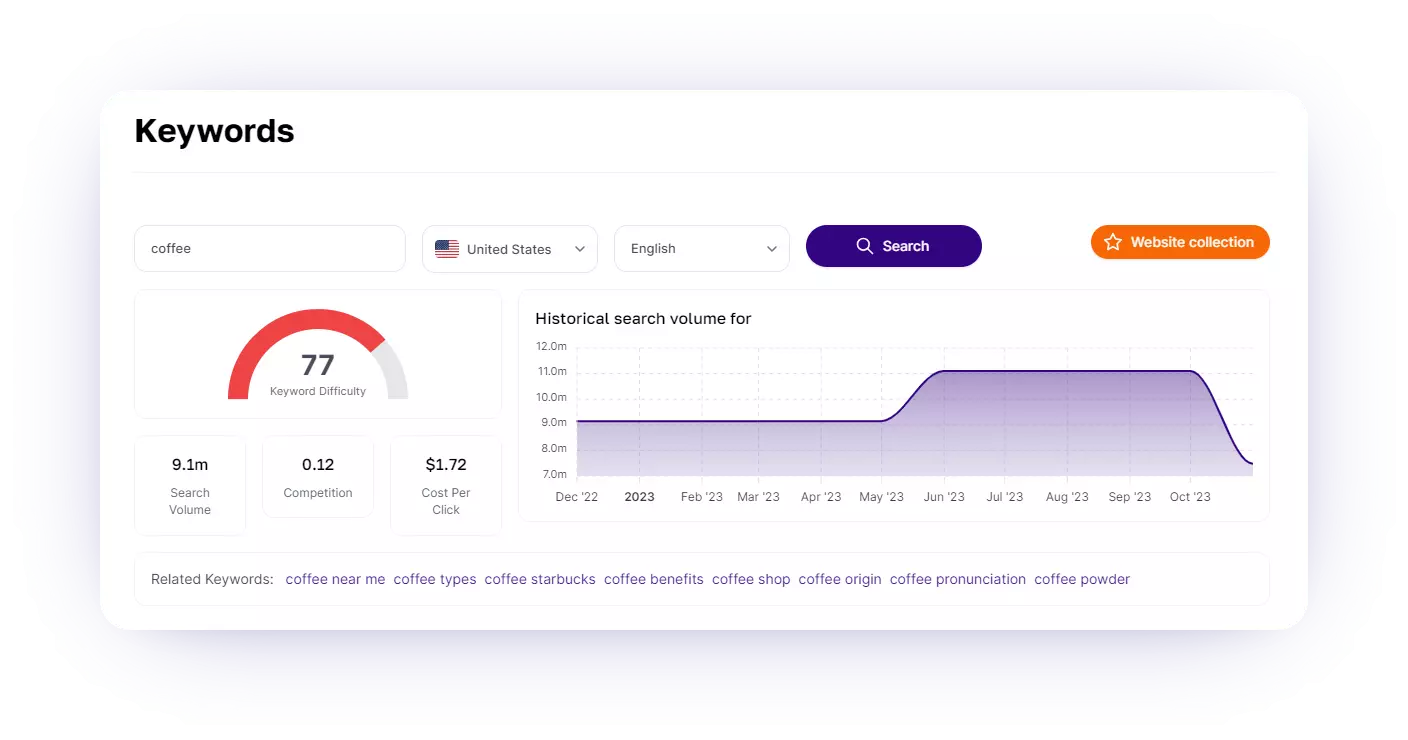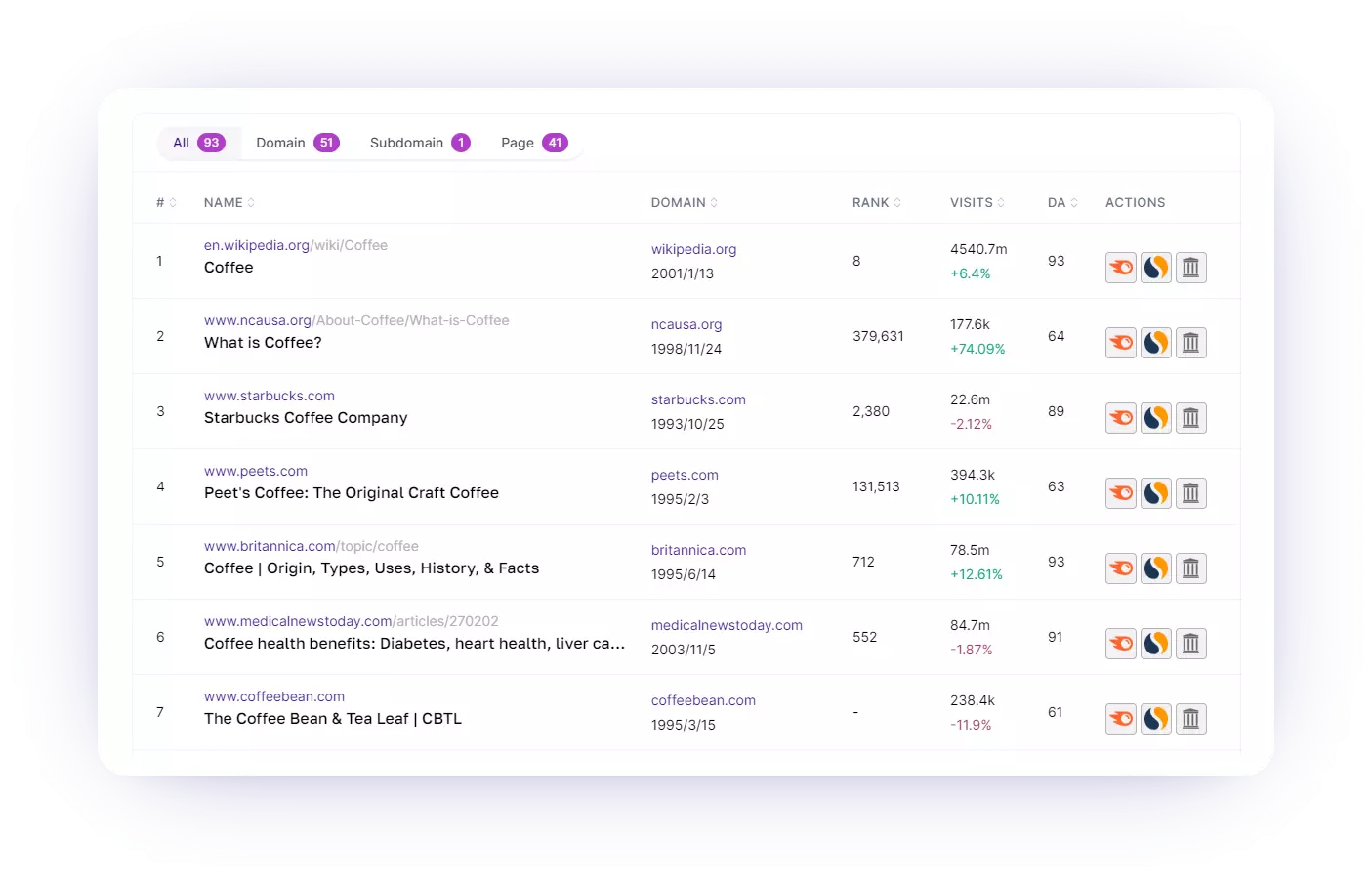
In today's marketing, two critical strategies stand out: Search Engine Optimization (SEO) and Search Engine Marketing (SEM). SEO vs SEM becomes a hot topic.
While these terms are often used interchangeably, they represent distinct approaches to enhancing online visibility and driving traffic to websites.
In this post, we'll delve into the intricacies of SEO and SEM, exploring their differences, and similarities, and how businesses can leverage these strategies to achieve their marketing goals.
What is SEO?
Search Engine Optimization (SEO) is a set of practices aimed at improving a website's visibility on search engine results pages (SERPs) organically.
The primary goal of SEO is to optimize various elements of a website, making it more attractive to search engines and thereby improving its ranking for relevant search queries.
Key Components of SEO
What is SEO included? We will explain in the following.
Keyword Research
Identify and target keywords relevant to the business and its products/services.
Use tools like Keywords Niche to discover high-impact keywords with SERP results. Take "coffee" as an example:

On-Page Optimization
Optimize title tags, meta descriptions, header tags, and content for target keywords
Ensure a website's structure is search-engine-friendly, with clean URLs and proper use of internal linking.
Quality Content Creation
Develop high-quality, relevant, and engaging content that satisfies user intent.
Regularly update and refresh content to signal relevance to search engines.
If you lack inspiration for SEO content creation, use our Keywords Generate tool, it can dig out hundreds of low-competition keywords with high search volume.
Read More: How to Write a Blog?
Link Building
Earn backlinks from reputable and relevant websites to establish authority.
Avoid unethical practices that could result in penalties, such as buying links.
What is SEM?
Search Engine Marketing (SEM) encompasses a broader range of strategies, including both paid and organic methods to improve a website's visibility on search engines.
Key Components of SEM
What are the key components of SEM?
Paid Advertising (PPC)
Pay-per-click (PPC) campaigns involve bidding on keywords to display ads prominently in search engine results.
Ads are charged only when users click on them, providing a measurable and cost-effective advertising model.
Ad Copywriting
Craft compelling and relevant ad copies that encourage clicks and conversions.
Use ad extensions to provide additional information and increase ad visibility.
Landing Page Optimization
Ensure that the landing page users are directed to align with the ad's messaging.
Optimize landing pages for user experience and conversion goals.
Analytics and Measurement
Use tools like Google Ads and Google Analytics to track the performance of SEM campaigns.
Analyze key metrics such as click-through rate (CTR), conversion rate, and return on investment (ROI).
What Are the Differences Between SEO and SEM?
Here are the main differences between SEO and SEM.
Cost
SEO is generally considered a long-term investment with costs associated with optimization efforts and content creation.
SEM involves immediate costs, as advertisers pay for each click on their ads.
Speed of Results
SEO requires time to see significant results, as search engines need to index and rank optimized content.
SEM provides instant visibility, with ads appearing on search engine results pages as soon as campaigns are launched.
Visibility Placement
SEO focuses on organic results and aims for high rankings in the main search results.
SEM places ads in prominent positions on search results pages, typically above or beside organic results.
Sustainability
SEO efforts contribute to sustainable, long-term visibility as a website builds authority and relevance over time.
SEM results are immediate but stop when the advertising budget is exhausted, making it less sustainable in the long run without ongoing investment.
SEO Vs SEM: Which Should You Use?
Choosing between SEO and SEM isn't a straightforward decision, and the answer depends on several factors. While it might seem like a somewhat elusive response to an SEO-related inquiry, the reality is that the choice hinges on specific considerations.
Here are some key factors to weigh in your decision-making process:
1. Specific Goals: If your primary objective is to generate quick traffic for a sale, test a new offer, or give a boost to a sluggish month, SEM is the preferred choice. If your focus is on achieving long-term growth, then SEO may be the more suitable option.
2. Existing Performance: Assess your current organic visibility. If you already enjoy strong organic visibility, SEM can serve as a valuable supplement to further enhance your overall visibility.
3. Margins: Take into account your profit margins. In scenarios where high click costs and low product margins make SEM financially impractical, SEO emerges as the channel offering potentially stronger returns.
4. Customer Lifetime Value (LTV): Consider the lifetime value of your customers. In SEM, higher Customer Lifetime Value may justify the associated higher click costs. Conversely, a lower Customer Lifetime Value might make SEO a more compelling strategy.
Understanding these factors allows for a more nuanced decision-making process tailored to your unique circumstances.
It's crucial to recognize that the effectiveness of SEO and SEM can vary based on your specific goals, current performance, financial considerations, and the nature of your target audience.
How to Combine SEO and SEM?
By combining SEO and SEM, you open the door to a synergistic approach that enhances your overall digital marketing strategy. Here's how the integration of these channels can amplify your results:
Data Integration for Informed Strategies
Leverage insights from your SEM strategy to turbocharge your SEO approach. Gain valuable data on expected conversion rates, keyword-level performance, and estimates of traffic opportunities.
Think of SEM as a testing ground that provides invaluable insights for refining your SEO strategy.
Enhanced Remarketing Campaigns
Strengthen your SEO efforts by incorporating remarketing campaigns into your SEM strategy. Target individuals who didn't convert into customers previously with a combination of search ads, display ads, and more.
This cohesive approach ensures a more comprehensive and targeted outreach to potential customers.
Dominate SERPs with a Comprehensive Presence
Combine the strengths of both tactics to establish a strong presence on SERPs. Simultaneously appear in the ad space through SEM and secure organic listings through SEO.
This dual approach ensures maximum visibility and reinforces your brand's authority across different sections of the search results.
Conclusion on SEO Vs SEM
In the dynamic landscape of digital marketing, the choice between SEO and SEM depends on various factors, including business goals, budget, and timeline.
While SEO and SEM have distinct characteristics, they are most effective when viewed as complementary rather than competing strategies.
A well-balanced approach that integrates both SEO and SEM can result in a robust online presence, increased visibility, and sustained success in the competitive digital marketplace.


